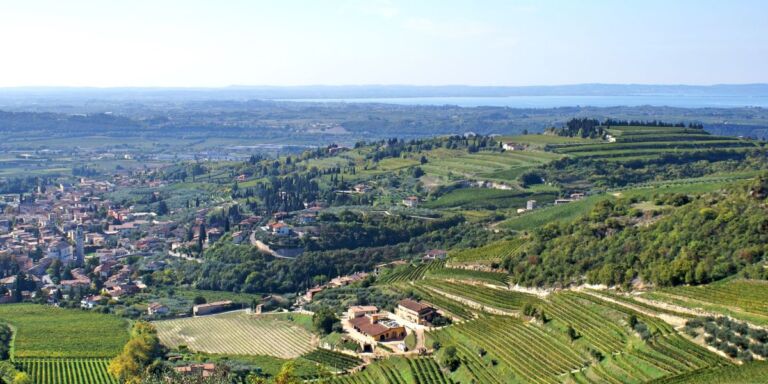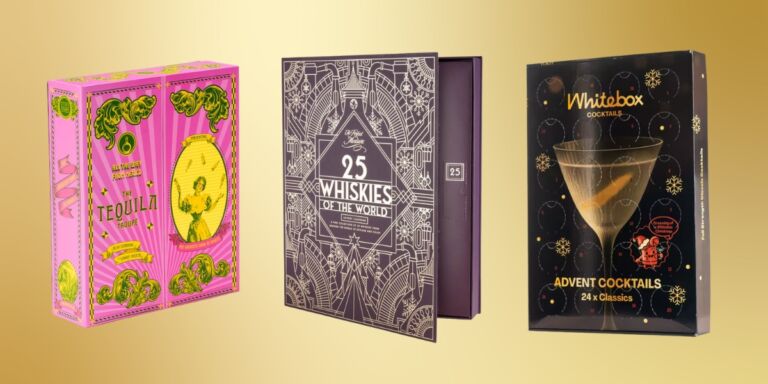Foreign wine companies investing in English land are nothing new but even so, a story that broke in recent weeks made everyone sit up and take notice: Jackson Family Wines of California announced that it was planning to acquire 26 hectares in Essex. Rather than focusing on sparkling wine like Pommery, Taittinger and Henkell Freixenet, the grapes it grows there will be used to make still Chardonnay and Pinot Noir. The story became even bigger for devotees of English wine when it was announced that Charlie Holland is leaving his job as CEO and winemaker at Gusbourne in Kent to head up the operation.
Though the news may be surprising, it makes perfect sense. While researching a book about English wine, the most thrilling examples I encountered on a journey around the country were often still Chardonnays. These included wines from the biggest producers, like Chapel Down with its Kit’s Coty vineyard, to the smallest; Gutters & Stars with its nervy, intense Daylight Upon Magic, the first release from a one-man-band urban winery located under an old windmill in Cambridge.

They are a far cry from the English wines of the 1980s. Chris Foss, founder of the wine course at Plumpton College, told me about his early experiments with Chardonnay: ‘We produced one demijohn with acidity of 25g/l and it was horrible.’ That is more than double the level of acidity you’d expect to find in an English sparkling wine today – and just imagine what it could do to your teeth. Such was Chardonnay’s reputation that when Mike Roberts was planting Ridgeview to make sparkling wine in the 1990s, veteran winemaker David Cowderoy told him not to bother because it was so difficult to ripen.
So what’s behind the transformation? Better winemaking undoubtedly helps
Thankfully, pioneers like Roberts and the Mosses at Nyetimber ignored the experts and the rest is English-sparkling-wine history. Growing grapes to make fizz, however, where high acidity can be tempered by the bottle-fermentation process, is a whole different ball game to making still Chardonnay. Gusbourne was one of the first to try with its Guinevere Chardonnay – I remember being impressed with the 2011 vintage – but it was Chapel Down that really went to town with its 93-acre Kit’s Coty vineyard near Maidstone in Kent that majored on still Chardonnay. I was fortunate enough to taste the 2011 Kit’s Coty Chardonnay recently, the first ever vintage, and it was still alive with peaches and limes and just beginning to take on a hazelnut quality.

So what’s behind the transformation? Better winemaking undoubtedly helps. Wilson says that ‘the most useful tools when it comes to acidity in English Chardonnay are malolactic fermentation and time’. He uses old oak barriques and ages the wine on the lees to give body and texture that helps balance the acidity. No amount of clever winemaking can make up for unripe grapes and an improved understanding of clones and sites has been invaluable in this respect, along with a warming climate. Finally, a willingness to take risks has also had a positive impact on the wines. Wilson says it can be a case of ‘hold your nerve and let it hang’ and Holland agrees: ‘If you’re brave, you can make something exceptional.’
It’s not an exaggeration to say that in the next 10 years, the Crouch Valley could be spoken of in the same breath as Margaret River, Sonoma and Limari Valley
The place you can let your fruit hang the longest is in Essex, specifically the Crouch Valley, the driest part of the country. This is where Wilson sources his Chardonnay and where Jackson Family Wines is currently looking for sites. Grapes have been grown here since 1969, when New Hall was founded near Chelmsford, and producers from outside the county have long relied on the quality of the fruit produced in the area. It’s doubtful anyone knows this better than Liam Idzikowski. When he was the winemaker at Lyme Bay in Devon in 2012 (a year when Nyetimber made no wine at all), he told me that you could barely ripen wheat in the West Country, let alone grapes, ‘but I saw all these ripe grapes coming in from Essex’. For Holland, the ‘lightbulb moment’ was 2021. This was a poor to disastrous vintage in much of the country but a long dry autumn allowed longer hang time in the Crouch Valley and wines were coming in at 13% alcohol. According to Holland, some growers were still picking in early November.

I remember tasting the 2021 Pinot Noir out of the barrel at Danbury Ridge, Idzikowski’s new employer, and could scarcely believe the colour and fruit. This is England’s most ambitious still wine producer, founded by the millionaire Bunker family who have spared no expense to make world class Chardonnay and Pinot Noir in Essex. Its wines are expensive and tend to sell out almost immediately, snapped up by eager enthusiasts and sommeliers. But if you want to taste the Essex magic, Lyme Bay is a producer to look for; its premium range is made from Crouch Valley fruit and you can pick up the excellent 2020 Chardonnay for £22 online.
It’s early days for Jackson Family Wines, they’re currently looking for land and not only in Essex. At the moment, there are no plans for a winery; the first wines will be made by Defined Wine in Canterbury. There will be sparkling wines produced initially from bought-in base wine from Kent and Sussex, and later red wines made from Pinot Noir. But it’s that intense Essex Chardonnay that I’m looking forward to most. It’s not an exaggeration to say that in the next 10 years, the Crouch Valley could be spoken of in the same breath as Margaret River, Sonoma and Limari Valley. If you want to see the future of English wine, go east.
Vines in a Cold Climate: The People behind the English Wine Revolution by Henry Jeffreys is published 3 August by Allen & Unwin.
Five of the best English Chardonnays

Lyme Bay, Chardonnay 2020
Made from Essex fruit, this is one of the best value English Chardonnays on the market with lots of green apple and nutty, lees-y notes.

Chapel Down, Chardonnay Kit’s Coty Estate 2020
The latest vintage is one of the best I’ve tried from this vineyard with lime, peach fruit and beautifully judged oak.
£33, The Wine Society

Cary Wine Estate, The Old Rectory Chardonnay 2022
From a small vineyard in Kent, this is made by Defined Wine and was one of the highlights of of the English wine stand at the London Wine Fair.
£25, Cary Wine Estate

Danbury Ridge, Chardonnay 2020
Made in an opulent oaky style, you’d never guess in a blind tasting that this is English. It shows what can be achieved in Essex by an ambitious producer.
£34, The Finest Bubble

Oastbrook, Chardonnay Reserve 2021
This comes from a tiny producer in East Sussex that makes just 10,000 bottles a year. This is a lean Chablis-esque style with ripe fruit and a subtle oakiness.
£32.50, Our Sommelier








